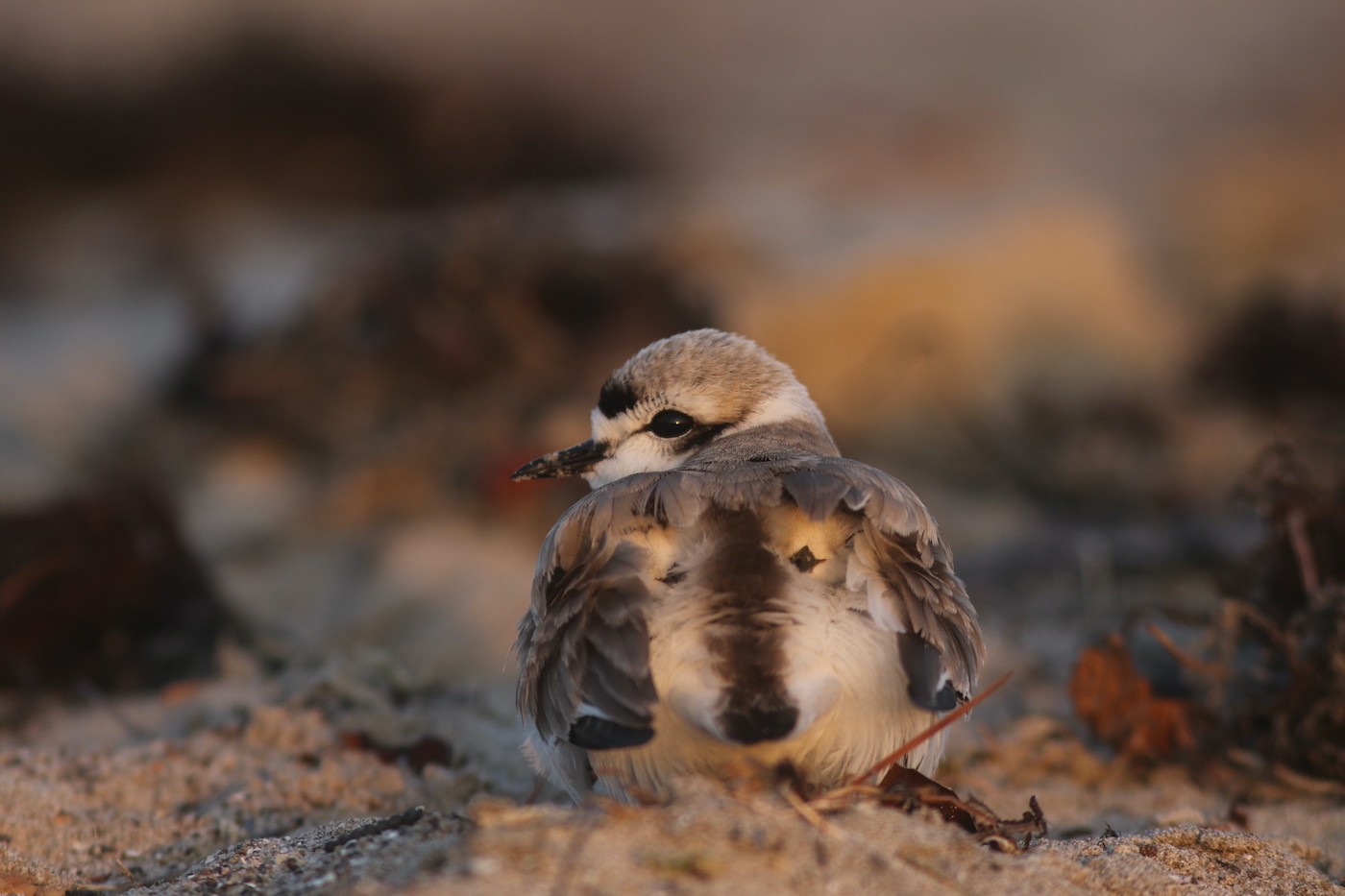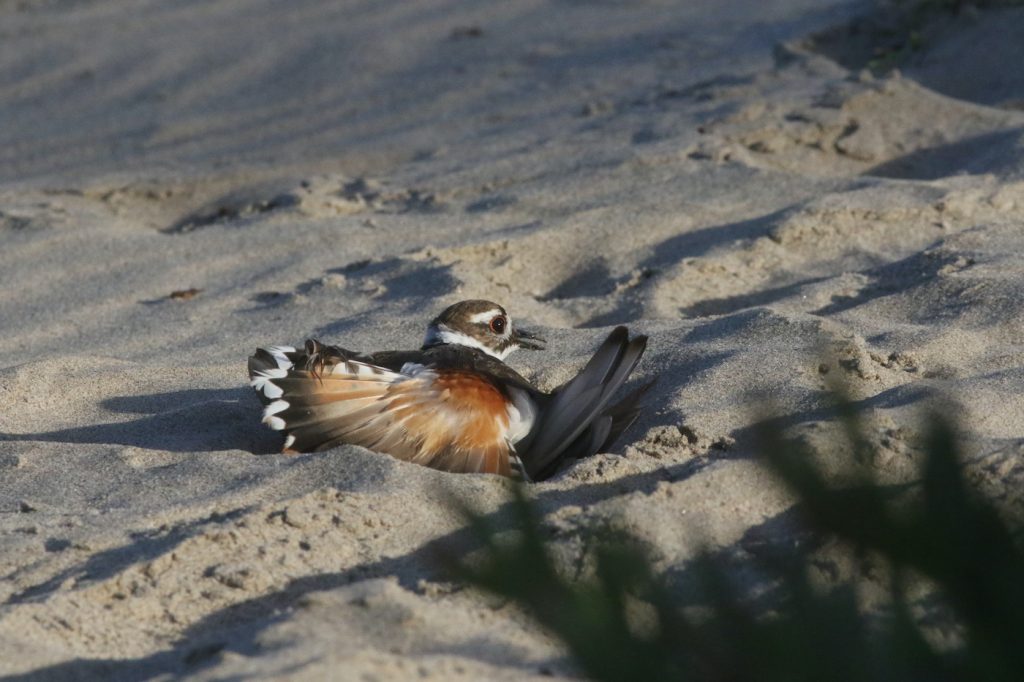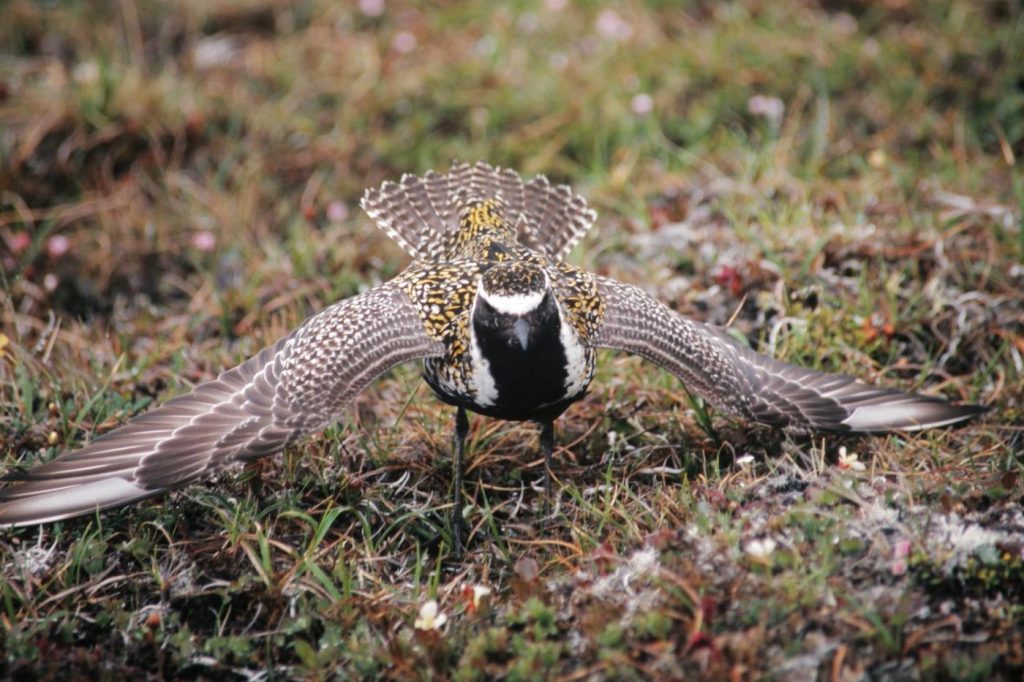Feigning Injury

Down on the Carpinteria State Beach, between the mouth of the Carpinteria Creek and southeast of the Tarpits, a nesting colony of western snowy plovers continues to grow on the popular summertime beach.
Nesting season is March 15 to September 15, and in 2021, the first successful western snowy plover nest since 1960 saw three snowy plover chicks fledge on that busy state beach. There was a big leap in terms of the number of nests attempted in 2022, with a total of nine. The first nest successfully fledged two chicks, but the other nests saw predation and big tides impacting any potential survivorship, revealing the challenges snowy plovers face as they attempt to reclaim historic habitat.
Whenever I had the time, I photographed the successful, endearing moments of the plovers. I also photographed the failures they endured due to beachgoers that were unaware of their nesting habitat, even though biologists posted signage and roped off all the areas where nesting was attempted. That area is above the wrack line, an area where mounds of gnarled kelp wash up with the incoming tide, providing an important food source western snowy plovers depend on. Kelp flies and beach hoppers – small invertebrates – are on their menu.
The Broken Wing Display
Beachgoers aren’t the only threat to these tiny shorebirds. American crows, western gulls, dogs on or off leash, raccoons, opossums, striped skunks, and raptors are also in the mix. Spending several hours at a time with the plovers, I also observed them perform the broken wing display. It’s a strategic ploy to feign injury when a potential threat closes in on their nests, luring the threat away from their eggs or chicks. The adults display what appears to be a broken wing, thrashing about, and even calling out to divert attention away from their nests.
On the Carpinteria State Beach, I saw plover parents display this survival tactic with western gulls, crows, and even a small dog. The first time I witnessed these theatrics was in Nome, Alaska, in 1998. I saw a Pacific golden plover quickly feign injury when a marauding Arctic fox meandered nearby. The tactic worked, as the plover drew the fox away from its four speckled eggs.
According to the Audubon Society, there are at least 285 avian species that perform the broken wing display. Not all of those are shorebirds, but it seems to be avian species where nests are camouflaged, but out in the open. For the western snowy plover, their nests are as simple as a depression in the sand, hidden by a flotsam of driftwood, or amongst hardy coastal flora like sand verbena, morning glory, or dune poppies.

Sharing the Beach
On the Carpinteria State Beach, active plover nests have taken up a huge swath of the beach that is roped off for months at a time, and over each active nest is a cage. All the cages are just big enough for a western snowy plover to come and go, but small enough to thwart predators.
However, western snowy plovers also must share the beach with semipalmated plovers and killdeer, fellow shorebirds trying to survive on a crowded beach. One morning I was watching a western snowy plover sitting on its nest inside its cage, when an unbeknownst killdeer chick wandered just outside the cage. The western snowy plover was upset, took exception to it, and flew right at the chick. An adult killdeer immediately intervened and went right into its broken wing display.
The western snowy plover wasn’t falling for it, and still went after the fuzzy killdeer chick. The dust up lasted for over a minute with the adult killdeer and adult snowy plover chasing after each other through the air until the plover finally forced the killdeer outside of the roped off area. So much for sharing the same habitat.
The tiny killdeer chick survived the shorebird scrum, and the western snowy plover returned to its nest of three speckled eggs. Just another day at the beach.






